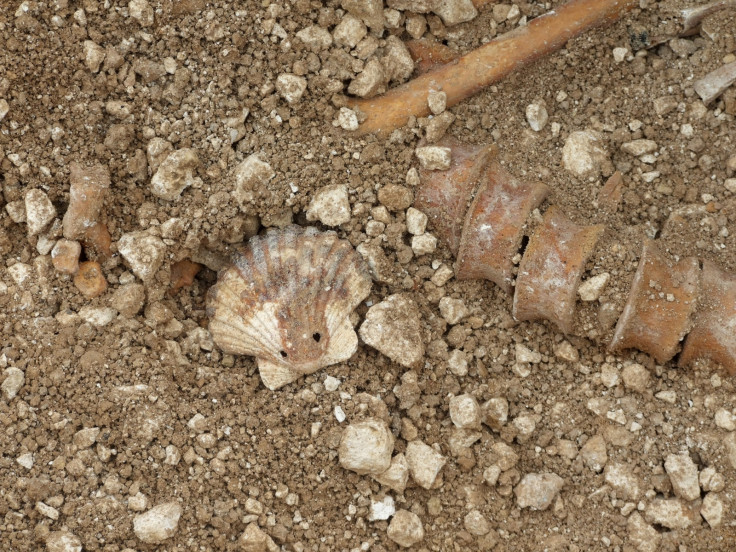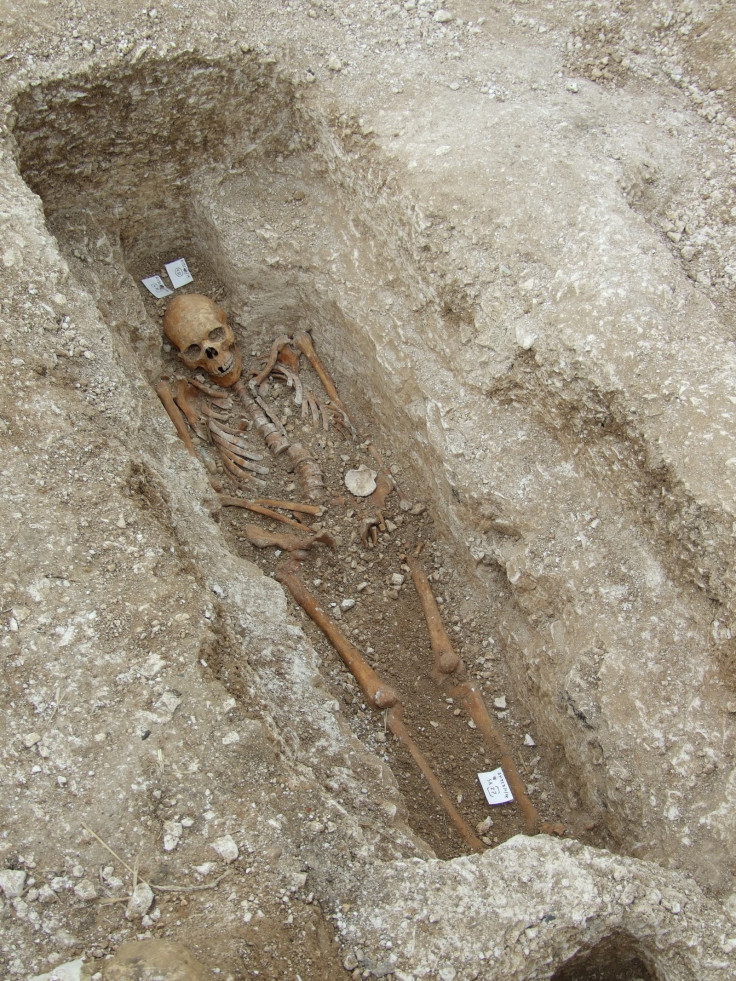Medieval pilgrim burial reveals new secrets about how leprosy reached Europe
One of the skeletons buried in the leprosy cemetery in Winchester appears to have been a pilgrim.
One of the leprosy sufferers buried at St Mary Magdalen leprosarium cemetery in Winchester was a pilgrim who may have travelled across Europe, to Santiago de Compostela. The analysis of his remains sheds a new light on how leprosy spread in Europe and how patients were treated, in medieval times.
The pilgrim's burial was excavated as part of a larger, eight-year-long archaeological project focusing on the leprosarium of St Mary Magdalen. Over 100 individual burials were discovered at this site, including that of the pilgrim, who was identified due to the presence of scallop shell in his grave. This is indeed a well-documented symbol of pilgrimage to Santiago de Compostela, which was gaining in popularity in the 12th century.
It represents the first burial of a pilgrim suffering from leprosy documented in Western Europe, which is one of the reasons that the archaeologists chose to analyse it in details. The complete findings are now published in PLOS Neglected tropical diseases.
A specialist hospital
St Mary Magdalen in Winchester is the earliest scientifically dated leprosy hospital in Western Europe. Other sources point to the existence of other leprosy hospitals around the same time, but no archaeological evidence have been found to date.
The hospital would have been created 11<sup>th century, in response to the emergence of leprosy which was starting to hit Europe. Radiocarbon dating suggests that the pilgrim would have died in the early 12<sup>th century, a few decades after the leprosarium's creation.
The site is unique in the UK for the high number of burials displaying skeletal lesions characteristic of leprosy – 86% of all the skeletons. Since leprosy can take two forms, one of which does not show on the bones, it is possible that the rest of the individuals may also have suffered from it.
"Such a high amount of skeletons with leprosy buried in one place suggest that the people working at the hospital knew what they were doing. They knew how do diagnose leprosy and identify those who needed treatment," study author Simon Roffey, reader in Medieval Archaeology at the University of Winchester told IBTimes UK.
"This contradict previous evidence we have that leprosy was an 'umbrella term' for other conditions, and that in medieval times, some people were diagnosed as having it without really suffering from it".

As for the pilgrim, he showed only minimal skeletal evidence for leprosy, which was confined to the bones of the feet and legs. However, molecular testing shows robust DNA evidence that he was affected by the disease, even if we was just in its early stages.
Leprosy in Europe
The pilgrim's case is very interesting because it allows archaeologists to explore different ways in which leprosy could have reached Western Europe.
"A common idea about leprosy that it reached Europe with the Crusades. However, archaeological evidence suggests that the leprosy hospital at Winchester had been found a number of years before the Crusades, so we can hypothesised that the pilgrim contracted the disease another way. Pilgrims would have travelled around, met people and gone into packed churches. They may have picked it up on their journeys across Europe and then helped spread it around. although the Crusades were a factor in the spread of leprosy in the medieval period, other conduits, such as pilgrimage, also played a part. Our research suggests another conduit for the spread of leprosy in Western Europe," Roffey said.
The archaeologists also genotyped the leprosy strain from the skeleton, discovering that it belonged to the 2F lineage, a strain usually associated today with cases from South-Central and Western Asia. This is also an indication that leprosy didn't necessarily come to Europe from the Middle East at the time of the Crusades.

Analysing the skeleton's bones in greater depth, the archaeologists found that the cranium and facial features displayed atypical morphology for northern European populations. This suggests that he was not from Winchester, but it is not not possible to pinpoint a specific geographical region of origin.
No outcasts
The next step of Roffey's research will be to study the status of leprosy sufferers in medieval times. "A common idea among historians and archaeologists is that leprosy sufferers were outcasts, that they were sinful and treated almost like criminals and isolated in hospitals on outskirts of cities," he pointed out.
However, the burials at St Mary Magdalen, including that of the pilgrim, suggest this was not the case, and that extra care was in fact taken to inter the bodies in a respectful and dignified manner.
Experts are now starting to look back at sources, finding evidence that leprosy sufferers were not actually were not discriminated against. "That seems to be modern idea, and more and more research suggest discrimination against leprosy was not occurring in many cases. It would be interesting to understand where this idea came from," Roffey concluded.
© Copyright IBTimes 2025. All rights reserved.





















